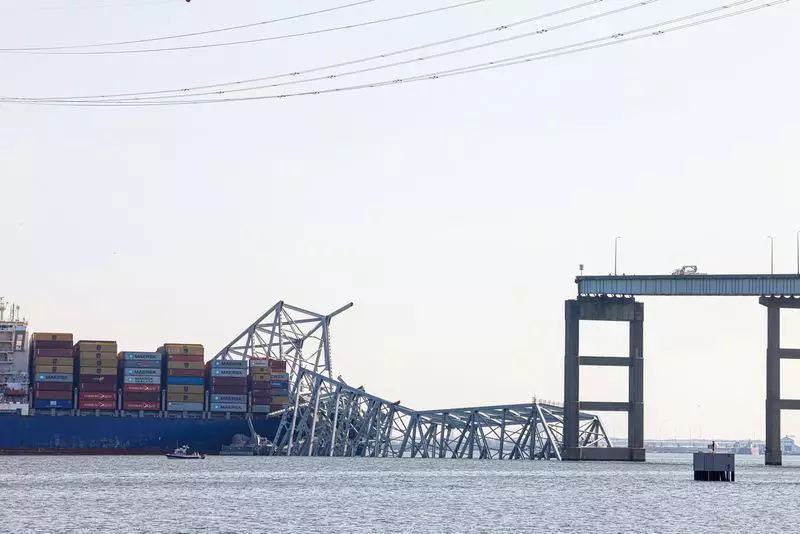The salvage operation of Baltimore’s collapsed Francis Scott Key Bridge has commenced, with crews preparing to lift the first piece of the bridge from the water. This crucial step will allow barges and tugboats to access the disaster site and begin the process of reopening the blocked port. The steel truss bridge collapsed tragically, resulting in the loss of six road workers, after a massive container ship lost power and crashed into a support pylon. The impact caused a significant portion of the bridge to fall into the Patapsco River, obstructing the shipping channel of the Port of Baltimore.
Maryland Governor Wes Moore addressed the media during a news conference, outlining the plan to cut a section of the bridge’s steel superstructure north of the crash site. This piece will be lifted by crane onto a barge and transported to the Tradepoint Atlantic site at Sparrows Point. Governor Moore emphasized that this action would eventually lead to the opening of a temporary restricted channel, enabling more vessels to navigate around the collapsed bridge. However, he refrained from providing a specific timeline for this stage of the clearance effort, emphasizing the complexity of the operation.
Governor Moore acknowledged the complexity of the salvage operation, highlighting the challenges faced by workers in clearing the debris and reopening the Port of Baltimore. Efforts to recover the bodies of the workers presumed dead have been suspended due to dangerous conditions preventing divers from operating effectively amidst the debris. Coast Guard Rear Admiral Shannon Gilreath elaborated on the necessity of removing debris from the deep-draft shipping channel of the Patapsco River before the stranded container ship, Dali, could be relocated.
The bridge debris removed from the waterway will pave the way for the relocation of the Dali, which remains lodged beneath a crumpled part of the bridge’s superstructure resting on its bow. While the operations are ongoing, a significant amount of concern has been raised about the impact of the bridge collapse on the daily operations of the Port of Baltimore, affecting approximately 15,000 workers. The port, a crucial hub for “roll-on, roll-off” vehicle imports and exports of farm and construction equipment, plays a vital role in the regional economy.
To alleviate the economic strain caused by the disaster, U.S. Senator Chris Van Hollen announced that the Small Business Administration has approved Maryland’s request for a disaster declaration. This designation enables small businesses affected by the incident to apply for emergency low-interest loans of up to $2 million until the end of 2024. Furthermore, the federal government has promptly allocated $60 million in emergency funds to support debris removal and the initial phases of bridge reconstruction. President Joe Biden has pledged full federal coverage of the costs associated with debris removal and bridge reconstruction.
The salvage effort of the Francis Scott Key Bridge in Baltimore represents a complex and challenging operation requiring coordination between various agencies and stakeholders. The tragic collapse of the bridge has not only resulted in loss of life but has also disrupted the crucial operations of the Port of Baltimore, impacting thousands of workers and businesses. As recovery efforts continue, the focus remains on the safe restoration of the port’s functionality and the eventual rebuilding of the bridge to ensure the resumption of normalcy in the affected community.


Leave a Reply